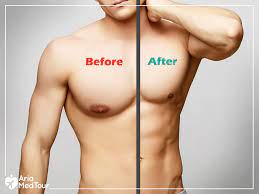Medical Marketing: Basics, Features, Trends

Medicine is perhaps the most competitive niche with huge growth capital in the future. According to Deloitte, by 2022, the global medical marketing spending volume will reach $10.059 trillion, where large corporations will determine the development vectors.
Russia has its situation after a short stagnation in 2014-2015. the market rose, and demand grew by 5-10% annually. Sectoral growth, in some cases, reaches values of 10-20%. According to statistics for 2019, the market for paid medical services in the general healthcare system of the Russian Federation reached 0.846 trillion rubles. Rubles.
Key players in the medical marketing
State institutions
- Free municipal
- Paid (paid branches)
- Hybrid (paid/free)
Independent clinics
We would not like to focus the reader’s attention on state structures because this is outside the scope of our interests and these institutions are rather closed. But the major network players and the independent medicine market are suitable for analysis.
The total share of revenue of large networks in the Russian market in 2018 is about 90-100 billion rubles. According to the healthcare marketing agency, domestic medicine generally increased revenues by 11.6%, and commercial mixture – by 10.8%, to 483 billion rubles.
Business Stat believes that the main reason for the growth of private medicine in 2018 was increased prices for services. According to the agency, the average price of a doctor’s appointment in 2018 was 9.8% higher than a year earlier. In addition, the cost of an initial meeting with a therapist at the companies in our rating has also increased on average – from 2,599 rubles to 2,809 rubles.
The operating profit margin in the segment is about 13%, second only to the three major sectors of the economy with a maximum margin of 20.3%. According to RBC, the private medicine market is concentrated mainly in Moscow and St. Petersburg – 55% of all private institutions.
Statistics of calls to medical institutions
- According to VTsIOM, only 46% of those surveyed go to the state polyclinic if they feel unwell.
- 33% self-medicate and do not go to any institutions
- Only 4% turn to a pain clinic for treatment
- The rest of the respondents let the disease take its course.
Key development driver for the medical clinic in 2021:
- The increase in the average bill against the backdrop of general inflation
- Expansion of departments of clinics
- Stationary
- Concentration on margin services
- Development of the pool of medical services
- Focus on selling complex programs
Structure of the medical services marketing Federation
Structure of the medical services market in the Russian Federation, 2012-2021 (Sources: Business Stat, KPMG analysis)
- 47% – CHI
- 18% – State medicine
The total share of state medicine and CHI was almost 70%. Against the background of the reduction in the presence of the state-free sector for the provision of medical services, it is believed that the share of VHI and paid medicine will grow rapidly. The key obstacle is the low income of the population. According to Business Stat, by the end of 2020, the share of compulsory medical insurance + state medicine will decrease from 70 to 65.8%, which is in line with the general policy of optimizing drugs in the country.
Structure of the paid medical services market, % (source: RBC)
- 7% — DMS
- 7.5% — Shadow medicine
- 20% – Paid medicine
Shadow medicine is the most stable segment that lives from year to year. We are talking about payments past the cash register. According to statistics, up to 40% of all patients under CHI or VHI at least once paid for the services of a doctor informally. The volume of the shadow market is about 182-250 million rubles a year.
We will increase the number of primary patients.
Order a free marketing audit and prepare a comprehensive strategy
SUBMIT AN APPLICATION
The structure of the paid medical services market
By specialization of services in value terms. Source: rbc.ru
- Dentistry – 32.7%
- Diagnostics and research – 14.3%
- Gynecology and Urology – 12.2%
- Surgery and Traumatology – 12.2%
- Therapy – 6.1%
- Other – 22.4%
Marketing of medical services
So, in the first part of our article, we assessed the structure of medical marketing, its major players, their turnover, and competitive niches. Now let’s move on to marketing.
Today, the share of private clinics in the country reaches 35%. For comparison, in 2013, this figure was at the level of 23.4%. This means that paid medicine is slowly confident in finding its patient in recent years. The key channel for attracting such patients is the Internet, with its colossal audience and opportunities.
Share of private network clinics in the volume of the paid medical services market (excluding the “shadow” sector), 2013-2018, % of the market volume (Source: rbc.ru)
Key advertising channels
- contextual advertising
- Search (organic) promotion
- Social networks
- PR
- RTB advertising
- Lead generation
- SMS mailings
Together, the tools of Internet search marketing and social networks can cover the needs of primary patients not only for already established services (search demand) but also for innovative treatment methods.
Everyone, from large network structures to small clinics in residential areas, uses Internet promotion with varying intensity. The more purchases of contextual advertising are made, the more work is done with multi-channel, and the higher the cumulative, synergistic effect from such an impact. The huge financial influence of tens and hundreds of millions of rubles in Internet marketing has a lasting effect.
Development of medical marketing
- Formation of sustainable vital (brand) demand
- Improve and stabilize conversion rates
- Improving the sales funnel, namely the record of primary patients
- Repeated appeals
But what should small and medium-sized players do, and how to properly build an advertising channel to attract patients with limited resources and opportunities? This is what will be discussed below.
Features of medical marketing for small clinics and medical centers
In conditions of limited resources, by which we mean: time, money, and people, the only possible way to attract patients will be to reduce the number of advertising experiments and strategy tests.
We want to say that it is worth concentrating efforts exclusively on proven channels: search engines. The audience of search engines today is colossal and comparable to TV and radio combined. Use this platform for the development of medical marketing – task number 1
Benefits of advertising on search engines
Spot study of demand
Contextual advertising or search engine promotion tools allow you to finely and practically fine-tune ad impressions to the desired demand. For example, if the clinic deals exclusively with gynecology, you can clean out all the other words that have little relation to commerce and topics and work only with what is needed. The message of the clinic becomes targeted to the right patients. Thus, optimization of costs for shooting sparrows from a cannon is achieved. Such a seemingly obvious fact, but even today, in the 20th year, this fact is not clear to all clinic owners. From here, the rejection of everything new continues. From here, the emphasis is placed on outdated leaflets and newspapers.
Regionality
This is primarily about the markets for medical services. Working in Moscow, you can set up the attraction of patients in this particular region. Yandex and Google search engines allow you to make such settings.
Lead generation
The right approach to SEO and contextual advertising can create a real flow of leads and provide the clinic with primary records for weeks and months in advance. The modern marketer knows the ways and mechanisms to achieve a flow of information.
Payback
We will not delve into the metrics by which the return on investment in advertising is assessed, and we will only say that search-based Internet marketing is almost the only payback channel so far. Investments in search engines can give calls from 100 rubles, while the average price of a therapist’s consultation is 1500-2500 rubles. Feel the economy? Everything is good, but this is not always the case because each clinic is unique, as is its website.
Testing
Working with medical SEO services and contextual advertising tools requires constant project activities, which include:
- Work with search demand
- Working with hypotheses
- Work with risks, the seasonal factor
- Working with product packaging
- Analytics of the obtained results, correct interpretation, and conclusions
- Reinvest the proceeds into the advertising cauldron to generate even more profit.
Medical marketing today is a bundle of advertising and sales departments
“5 years ago, there was a queue of patients in my clinic. I was going to work, and people were standing on the street. So I put up a sign with a running line about tests, and that’s it. Now only in my area (Moscow), there are up to 50 clinics. So the old methods don’t work anymore.”
Clinic owner, anonymous
It is not always possible for a patient to pay in full during the initial paid consultation. Especially if the cost of attracting him costs 1,500 rubles, and a consultation with a gynecologist is 2,000 rubles. Therefore, a marketer must work out a product competently before launching it.
We remind you that small businesses have no time and money for testing and no seed and system investments for overclocking. Instead, the entrepreneur spends money providing rent for premises, doctor salaries, license renewal, equipment and drugs, and advertising. Therefore, you can act only based on marketing analysis and the industry’s specifics under a true professional’s guidance.
Medical marketing today is a combination of marketing and sales. A patient’s arrival is an integral part of advertising, so there should be no weak links in the sales funnel chain when generating leads, processing them, and prolonging the patient’s LTV.
Key marketing trends in the medical field
Content
Content continues to be the engine of sites in search engines. In no case should one neglect unique and expert articles. Find time and energy for self-promotion on your website and in specialized areas. Any mention of a clinic expert or the clinic itself in the external environment gives tremendous growth to the business. By the way, this also includes offline events: webinars, exhibitions, performances on radio programs and TV (especially on federal television)
Content is not just articles. And it is a marketing tool for promoting clinic services. You can consider it the second currency after rubles.
Increasing the patient’s LTV
We are talking about the fact that your clinic should have a strategy for attracting patients and increasing the patient’s life. Do not think anything bad; we are not talking literally but figuratively. A patient’s life span is the period the client pays money for services. Put, today; he came for a paid consultation. Tomorrow he ordered a cosmetic procedure, and a month later, he bought a six-month program.
LTV is a key metric that will make your medical business profitable. This is a bunch of a working group: a marketer (or agency) + a call center operator, + a doctor. The repeated arrival of the patient will depend on how this bundle of specialists works.
“An undeniable trend is that clinics are switching to a subscription payment model. The owners pack the product into weekly programs. This is especially common in cosmetology, where services are sold in courses. This approach is the extension of LTV in its purest form.
Total business profitability
Building intelligent end-to-end analytics allows you to see the following indicators at any time:
- A problematic area (bottleneck) that prevents the clinic from increasing profits
- Anomalies in the form of reduced conversion or wasted advertising money
- Growth or decline dynamics by referrals and primary patients
End-to-end analytics in medical marketing allows you to save up to 40% of the advertising budget, reduce staff costs, and work more efficiently with limited resources.
We will increase the number of primary patients.
Medical marketing agency or staff member?
Today, the question is not “either-or.” Rather, the question is where to get an intelligent marketer who knows how not to deal with leaflets or set up contextual advertising (although this is important). A person in the position of a marketer in a clinic must understand the key trends and features of medical marketing, be fluent in methods for evaluating the effectiveness of advertising channels, calculate profits, and be a person of big numbers.
The agency will work effectively with the clinic on contextual advertising, search promotion, and SMM marketing only in conjunction with a competent marketer on the customer’s side.




